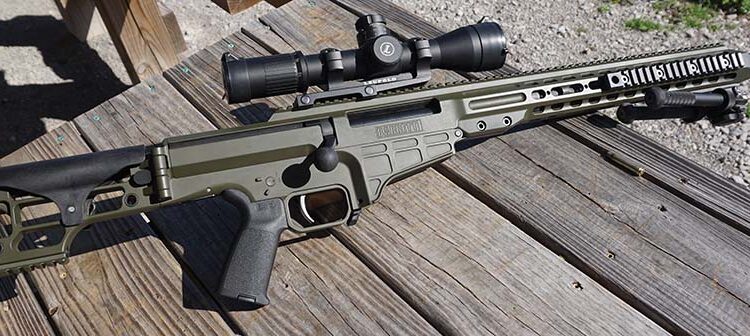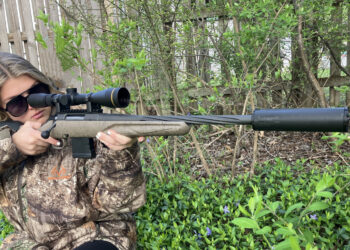By Miles Vining
In part I of the Interview In SAR Volume 20 Number 9 SAR gathers the background on Barrett Firearms and Chris Barrett’s participation in the growth of the company. We take up the story at that point…
SAR: What is Barrett’s recent interest in creating a medium machine gun?
Chris: A while back a solicitation come out in the Commerce Business Daily. It was part of the network that people used for Government Contract announcements. Nowadays it is called Fed Biz Ops. The solicitation was for a lightweight version of the M240 series. Primarily replacing the Bravo version. Eventually this turned into what the M240 Lima is today. What we thought was really the case was that the solicitation was written so one particular contractor could quickly win it, written between the lines, and a Commercial Off the Shelf product would be available.
Apparently they were looking into a lightweight M240 at the same time the solicitation came out as well. We were very disappointed at that after we had invested so much energy into our design. Regardless, we saw the solicitation and we put the Barrett brain to it. We looked at the M240 and saw all these different rivets and small parts and thought to ourselves, “With a modern CNC machine can’t we make all of this one piece? Can we turn sixty some pieces into one part?”. And the answer is “Yes, you can.” The riveted design has a lot of short comings. One, it is built like the Titanic, old school, steam power, this is how we built things in the industrial revolution. It has laminations between metal. This is where corrosion and rust like to start. Anytime two pieces of metal are touching together, what happens between them? Oxidation. Any fastener eventually comes loose, a simple principle of firearms design. Anything designed to come loose, does. And rivets are a kind of fastener. So we designed a hardened 4140 steel receiver, that alone was four pounds lighter than the standard 240. It is simple, and proven. So we feel that the solution that the Army received in the Lima was not particularly creative at all. It is not wise to say, “Let’s take a great design and just make every part out of titanium.” That’s not how you select material as an engineer, by just selecting material based on one attribute. Titanium isn’t the ideal application for what that machine gun is used for. I would call it a misunderstanding of design intent. We just have a simple and elegant solution to a problem. We’ve really been paying attention to the design recently as well. We started with the receiver, the heart of the gun, and now we are moving out from there, on to many different parts of the machine gun. We will have several patents on components of that machine gun by the time we are production ready. As an example, the original handguard design with the tri-Picatinny rails clamps onto the gas tube. It tends to heat up very quickly during a course of fire. So the handguard has to be a huge block to keep your hand way from it, with heat insulators to further keep the rails from getting hot. We decided to say, “We’re not touching it”. Ours doesn’t even touch the gas tube, it bolts to the front of the receiver and free floats as you will along the gas tube. We removed the bipods which also used to be mounted to the gas tube, and that is connected to the barrel. I know that a machine gun is not a sniper rifle, but I want my machine gun to hit where I’m aiming. And even on that gun, with that heavy of a barrel, as that gun gets warm and I’m putting pressure from my head on the butt stock, that deflects a barrel and could have detrimental effects downrange. So we moved the bipods to the handguard, which is already free floated, so you are not affecting the point of impact. Your handguard and your bipods are still getting some heat radiated off of them but it is nothing compared to the previous design. Then you have the ability to quickly remove the bipods. If you damage them or need to get them out of the way in a hurry, then you can easily remove them with ours, but with a conventional M240, you have to take some time to take them off, time you might not have. We also redesigned the butt stock, feed tray cover, even some of the internals. Then we did the 240 LWS, the Lightweight Short. It is four inches shorter, but with the same system. It is a machine gun, the size of the Mk.48 in overall length, almost the same weight, but it is a 240. And the 240 is an undeniably reliable machine gun. The Mk48 is not what the 240 is, when it comes to reliability. What we think we have done, is that we have created a machine gun that is the same package size of the Mk48, but has the unwavering reliability of a 240.
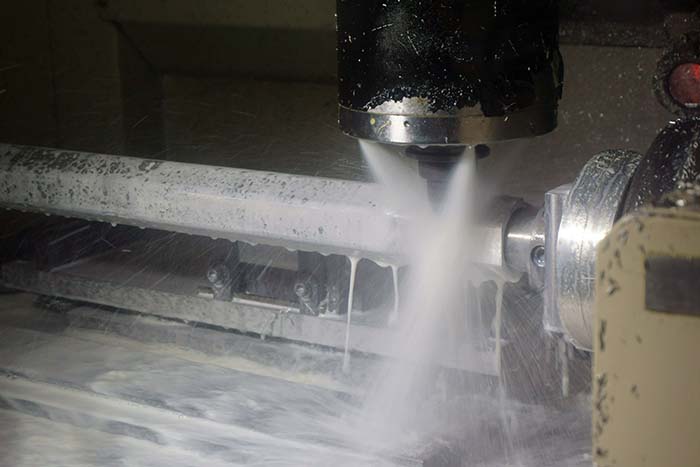
SAR: Has there been any further input on the 240 LW outside of the U.S. and have there been any sales?
Chris: Yes, we’ve actually sold some 240 LWs to two countries now, one of them in northern Europe. They are very discerning customers, and they love our design so far. We’ve worked with them a lot on the design and throughout the experimentation process. We’ve got some interest from more, but this kind of thing takes time.
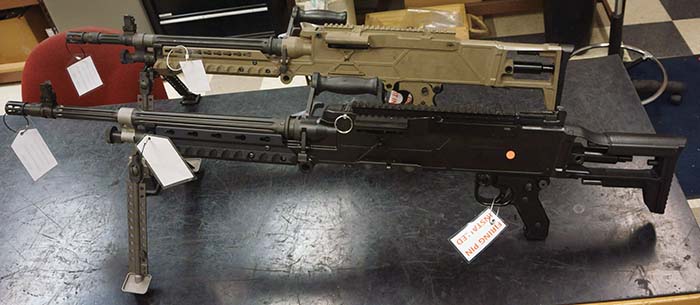
SAR: The Model 82 has made Barrett unique in that since its inception, the company doesn’t have any direct competition when it comes to a .50 caliber, long range, anti-material rifle.
Chris: There is an enormous value to being first in a field, and not only being first but also having a quality product. You almost have to be negligent to be caught off guard in that case, to get caught by competitors. We’re persistent with our platform, we have a rifle that is 30 years into maturity, and they are only getting better. We’ve got a tremendous amount of field testing from militaries all over the world as well. Things you cannot duplicate in a laboratory or design shop have resulted in the M82A1, with the enhancements to the bolt carrier group, are really at the heart of why that rifle works so well. But then the rifle became the M107. So dad built the rifle and it had some limited military usage, and I believe it was Sweden’s military EOD teams that were the first to pick it up. A huge misconception we have is that this rifle was developed for military usage and in reality, it wasn’t, there wasn’t a requirement out there that it would fill. People thought it was a bad idea to begin with. Ronnie Barrett, a photographer, who played with subguns and belt feds, wanted to shoot a .50 caliber firearm, but didn’t want to own an M2. But the military started seeing a use for it, and it just took off from there. We modernized it even further with the M107A1, which made it a lot lighter, more precise, and it takes a suppressor. It was a block of enhancements, some from feedback, some from things we knew we had to change from experience of building the rifle. Well the U.S. Military has not adopted the M107A1 because like a lot of things in Government procurement, things can take a while to happen. So the U.S. has not adopted it, but several other countries have adopted it as their first anti material rifle. Norway, Denmark, to name a few. We also offer an A1 upgrade to militaries that have the M107, in which we cut the rear of the buttstock off and put a polymer piece in it, with adjustable length of pull, and an integrated monopod socket with a Picatinny rail. This also allows for the fitting of a spade grip to the rear of it from which you could fire the weapon from inside a vehicle more easily than the traditional grip. We changed many of the little features as well, when it comes to tolerances and fits. In the beginning the M82s were 3 or 4 MOA rifles, we have multiple M107A1s that are shooting 1 MOA today. However one of the biggest downfalls of the rifle is the ammunition. Throughout its history it has mostly been employed with machine gun ball ammunition and it needs precision rounds for long range work. We handload our own rounds here for that purpose.
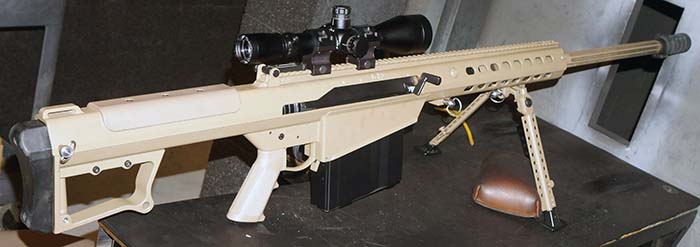
SAR: What are some of the recent changes that have influenced the company?
Chris: When it comes to employees, as we have become more efficient, our employee to rifle ratio has not grown. Our peak employee count was during the M107 fulfillment because we had to surge our production. But what has happened in the last three to five years is that we’ve gotten better leadership which has led to better efficiency. Now we are back down to around 110 employees, but are making more than we ever have before. It’s processes, and technology. We are getting better via technology but are keeping that Barrett “DNA” of the people that make it happen. We still have craftsmen, but we are leveraging technology as much as we can. In essence, to get to the ragged edge of performance, it costs a lot. The difference between a rifle that can shoot 1 MOA and one that can shoot .5 MOA, well that last .5 MOA is going to cost you a higher percentage than getting to 1 MOA. But the people we’ve added, the executive leadership team has been instrumental in changing the way the company operates, through the efficiency, the quality, and the customer satisfaction level. Especially our Vice President of Operations, is one of our unsung heroes. He isn’t from the gun industry at all, he’s from the automotive industry. Our sales head, he’s from this industry, and you have to have that. The sales guy has to know who to call, how things work within it, etc… But at the operations level, I didn’t want that. The gun industry compared to other industries is largely immature. As an example many companies have still been building guns gunsmithing style, fitting them together. He has changed the way we work in that he brought in a hospital like mentality of keeping everything clean, having quality control checks. He is the reason why we build more products today than ever, with more quality, more efficiency, with less defects, and with fewer people. I like to think we follow the Thomas Edison model. Edison was a brilliant designer on his own accord, but he didn’t design everything he came out with. He was the creative director of a group of people that he pushed to get what he knew he wanted. That’ is why he created so many industries and that is more or less where I want to see Barrett go. It is fantastic to have a Ronnie Barrett that put together the M82, but we are trying to get a whole group of equally talented designers, who are pushing the envelope. That is where I see us going. He is still here with us though, out on the floors, still very involved in everything that is going on. But for the future, we are looking into getting the right gun design team to be able to free him up and keep our products going. We are trying to stay above the trenches and see out as far out as we can, predict trends and so on. Sometimes the world’s greatest products were not from necessity but from someone saying, “Hey, this is where we need to go”.
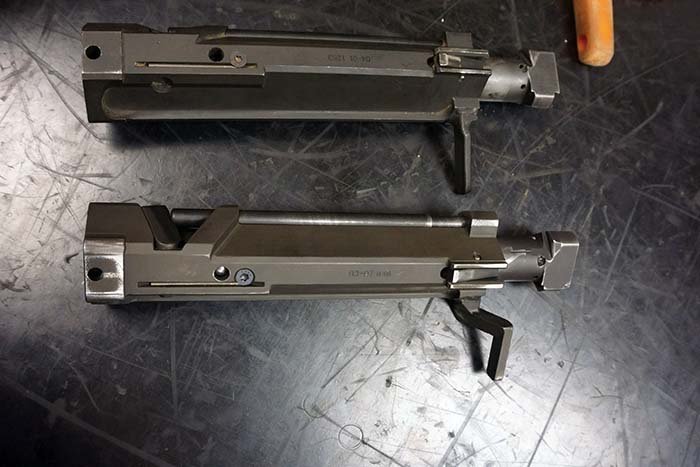
SAR- So where does that put the company in the future? Where will Barrett be in 3-5 years?
Chris: I want to really broaden the Barrett brand so that it is accessible to more people in more markets. For example we’re pushing into the smaller calibers, the AR market. Because we started with the super niche, the M82. We’ve also got the .416 Barrett, which everyone thinks of as a California legal round, but it is so much more than that in that it is an exceptional cartridge of its own accord when it comes to long range precision. It should change what people consider to be long range. Long range used to be a thousand yards, it used to be three hundred yards a long time ago. Well I’m going to say that long range is now over two thousand yards. We want to be optimizing platforms for that cartridge. We want to offer the Barrett name to customers who might not have a need for a .50 caliber rifle. That’s why you see us with the REC7, and the MRAD. We have also launched a sub-brand of high end shotguns. We like hunting, we like traditional sporting guns too, but that doesn’t fit under the traditional Barrett brand though. We’ve got our Barrett Sovereign line of over and under shotguns, that we just introduced at SHOT show. A lot of people love the Barrett brand but they aren’t going to buy an anti-material rifle. Take for instance the Safari Club International folks. As another example we’ve acquired the assets of Forbes rifle company, a hunting rifle manufacturer, which makes some really light hunting rifles. I would like to see us as the Beretta of the United States, in that their product line up is very extensive. We’re not going to quadruple the amount of M107A1s we make, it is just not going to happen. So as a company that started at the highest echelon of performance, you can only go so far with that. You have to make products that appeal to a broader market if you want to grow. Back to us, the more products we make, the better we get, and the better our flagship products are. You just learn things from making that many more products that you wouldn’t have found out by just making just a few. That technology trickles up and down.
| This article first appeared in Small Arms Review V20N10 (December 2016) |



